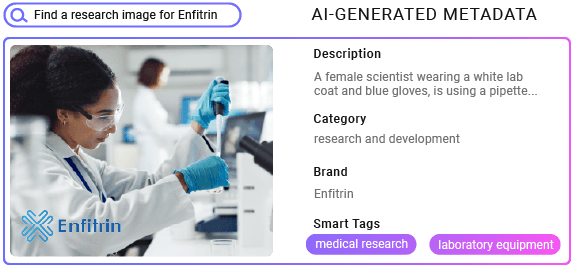Scaling content is no longer just about making more of it. It’s about getting the right content to the right audience, in the right format, at the right time, and doing it without slowing teams down. That’s where metadata comes in.
In a DAM system, metadata is the structured information attached to each asset. It tells you what something is, how it can be used, who it’s for, and where it belongs in your content ecosystem.
TL;DR
Metadata enables scalable content operations by making assets easier to organize, find, reuse, and govern. From automated workflows to modular assembly, metadata helps teams streamline content across the entire supply chain without adding friction.
Why metadata matters for scale
Without metadata, your assets are just files. With metadata, they become findable, reusable, and ready for automation.
Here are some of the ways metadata supports scalable content operations:
- Search and retrieval – Helps teams locate assets fast, even in massive libraries
- Personalization and localization – Enables tagging by audience, region, or campaign
- Workflow automation – Triggers routing, approvals, or expiration rules
- Compliance and rights management – Flags restricted or outdated content
- Modular content assembly – Powers dynamic combinations of content blocks across channels

From campaign launch to repurposing
Metadata follows content through every stage of the supply chain: creation, review, deployment, and reuse. It makes sure assets aren’t duplicated, approvals aren’t missed, and opportunities for reuse aren’t lost.
It also helps eliminate common bottlenecks, like unclear asset ownership, poor tagging practices, or lack of visibility into what’s available for reuse.
Built for enterprise scale
If your teams are managing thousands of assets across products, regions, or markets, scaling content without metadata is nearly impossible. Metadata is what enables you to automate tasks, maintain consistency, and make smarter content decisions—without adding headcount or slowing things down.
Final Take
Metadata is the backbone of the modern content supply chain. It connects your assets to your workflows, your systems, and your teams. If you want to scale content operations efficiently, investing in strong metadata practices isn’t optional—it’s essential.
FAQ
What is metadata in the context of a content supply chain?
Metadata is structured information attached to digital assets that helps describe, organize, track, and manage them throughout the content lifecycle.
How does metadata help teams scale content?
It powers automation, supports reuse, improves search, and enables efficient routing and governance across high volumes of content.
What types of metadata are most useful in a DAM system?
Common metadata types include keywords, usage rights, campaign tags, audience segments, product SKUs, and localization markers.
Can metadata reduce manual work for content teams?
Yes. Metadata allows teams to automate approvals, flag compliance issues, and avoid re-creating assets that already exist.
Why is metadata important for personalization and localization?
It helps tag assets by region, language, audience, or channel so content can be adapted and reused without reinventing it each time.



